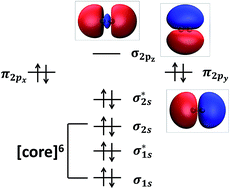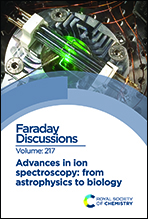EOM-CC guide to Fock-space travel: the C2 edition
Abstract
Despite their small size, C2 species pose big challenges to electronic structure methods, owing to extensive electronic degeneracies and multi-configurational wave functions, which lead to a dense manifold of electronic states. We present detailed electronic structure calculations of C2, C2−, and C22−, emphasizing spectroscopically relevant properties. We employ the double ionization potential (DIP) and ionization potential (IP) variants of the equation-of-motion coupled-cluster method with single and double substitutions (EOM-CCSD) and a dianionic reference state. We show that EOM-CCSD is capable of describing multiple interacting states in C2 and C2− in an accurate, robust, and effective way. We also characterize the electronic structure of C22−, which is metastable with respect to electron detachment.

- This article is part of the themed collection: Advances in ion spectroscopy - from astrophysics to biology


 Please wait while we load your content...
Please wait while we load your content...